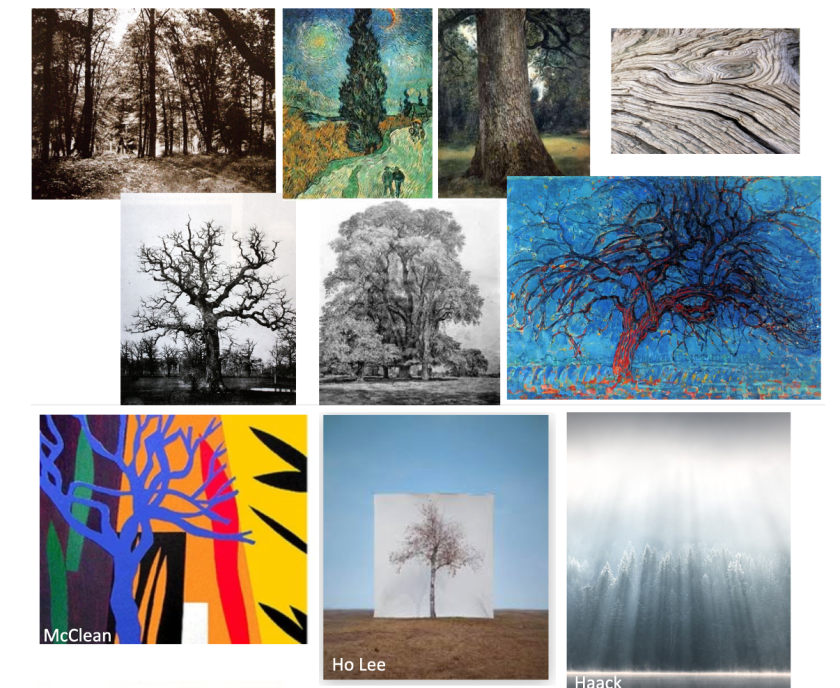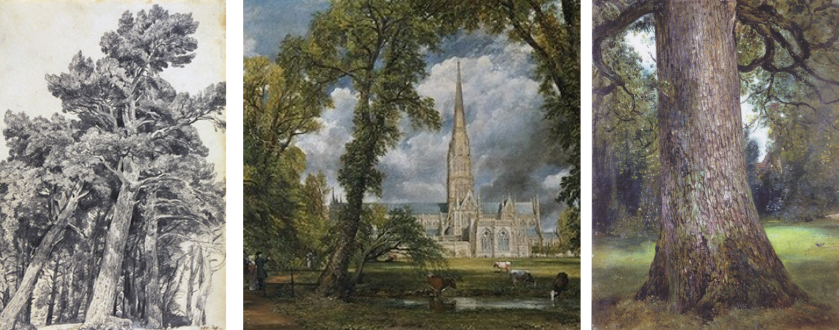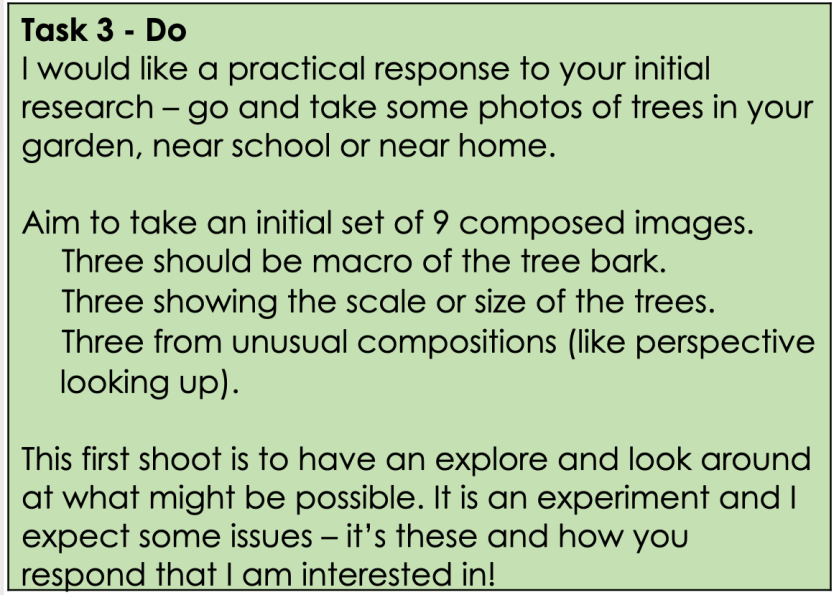
This is a recent project I have completed with Year 10 students based on a GCSE photography theme of Trees. It was designed to be done ‘remotely’ or in a blended online/in-school way. It could be adapted for a fine art group quite easily but the emphasis is really on photographic techniques. The tasks presented here were all carried out last half term by the students working independently at home due to the pandemic lockdown and necessary online/remote learning (there are 22 in this class). As this coursework will be assessed as final marks, I can’t publish students’ examples.
What you will need:
- Ideally a DSLR cameras but use what you can
- Willingness to get and explore rather than stay at home
Inspiration
Having an idea about why trees have been an artistic source of inspiration but also seeing what has been done in the visual arts in response to trees has helped focus the artistic direction of students’ work during this third lockdown. For an urban school, there may have been more difficulty in finding a range of trees or enough trees than a local park. My students are blessed with living on the edges of what was the Sherwood Forest in Nottinghamshire and there are abundant copses, woods, stands and even forests to visit.

During the initial phase we did some analysis of a range of paintings, photos and mixed media responses to the theme. Looking at contemporary artists as well as a focus on John Constable’s pencil drawings and landscape paintings and the series by Piet Mondrian based on trees and abstraction in paintings.
Method
We used the CoMoProFo* technique developed over time to look for visual formal elements and how a viewer might respond to specific examples. For this we selected a series from Constable and Mondrian:

Pencil studies and oil paintings by Constable

Abstract trees by Mondrian
*Content: what can be seen? Mood: how is the viewer meant to feel? Process: how was the art created? Form: in what physical form can the art be experienced?
Through looking closely at these we could define texture, close-up/macro, abstraction as well as rhythm, balance and harmony. This can then be used for contemporary fine art and photography such as images by Ho Lee and Haack.

Our first photoshoot was an exploration to see what interested the students but also to get them out and looking around in their locality. The next phase was to review and develop including an interest in the tree and it’s vicinity, reflections of trees in water and finally abstracting ideas about trees (details like: bark, stems, leaves, overstay etc.).
Editing
Although this project was not intended to be heavily post-production based, there may have been some photos that needed a little cropping and increased contrast or refinement. The results of editing will be continued on our return to school although some experiments were possible at home using apps like Snapseed and Photopea. Creating abstraction ideas were achieved using Powerpoint to some degree although apps like Fragment and Prisma did a more successful job.
Kids’ Feedback
“We have been stuck indoor due to the weather… this assignment meant I had to go out and explore again”
“I liked the trees project because we don’t have many near us and my dad took us to the woods on the weekend”
“I enjoyed tree-bathing in the leaves; I wanted to do a photo series of my creativity with branches and leaves like Andy Goldsworthy”